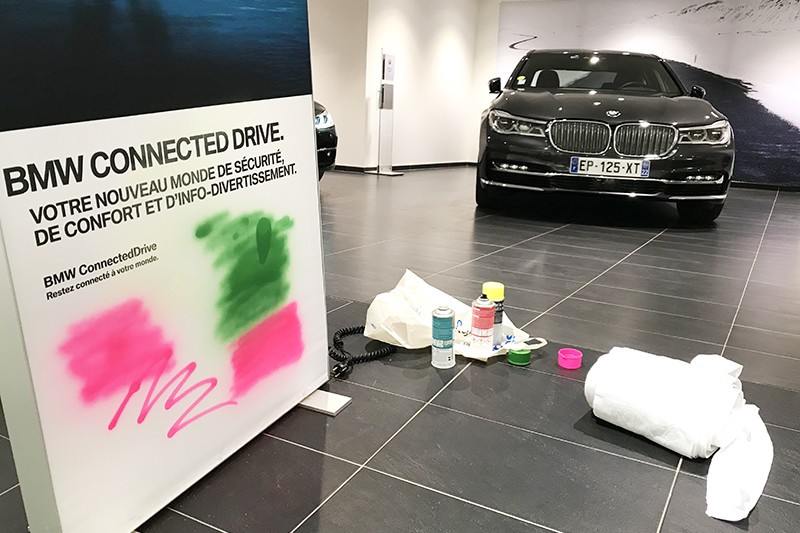As the vivid strokes and intricate designs breathe life into the walls they adorn, the task of maintaining these masterpieces becomes an art form in itself. Welcome to a world where graffiti art maintenance isn’t just a chore; it’s a sacred duty of safeguarding cultural narratives etched in paint. Step into the labyrinth of hues and meanings, where each stroke tells a story and every tag whispers a secret. In this guide on long-lasting indoor graffiti, we unravel the enigmatic dance between artistry and preservation, offering you a treasure trove of insights to uphold the sanctity of mural masterpieces. From art protection tips to the subtle nuances of indoor graffiti care, embark on a journey where walls don’t just talk—they sing timeless ballads of creativity and resilience. Let’s delve into the realm of durable wall art together, where every brushstroke is a heartbeat echoing through the corridors of artistic legacy.
 The Importance of Proper Lighting and Climate Control
The Importance of Proper Lighting and Climate Control
When it comes to preserving indoor graffiti art, one of the key factors to consider is proper lighting and climate control. Graffiti art is often created using various materials such as spray paint, markers, and acrylics, which can be sensitive to environmental conditions. Without the right lighting and climate control, these artworks can deteriorate over time, losing their vibrancy and visual impact.
Firstly, let’s talk about lighting. Natural light can be both a friend and a foe to indoor graffiti art. While it can enhance the colors and details of the artwork, prolonged exposure to direct sunlight can cause fading and discoloration. Therefore, it is crucial to place the artwork away from windows or use UV-protective film on the glass to filter out harmful rays.
In terms of artificial lighting, it’s important to choose fixtures that emit a balanced spectrum of light without excessive heat. LED lights are often recommended for their energy efficiency and minimal heat output. Additionally, using spotlights or track lighting can help highlight specific areas of the artwork while creating an overall ambient glow.
Climate control is another vital aspect of preserving indoor graffiti art. Fluctuations in temperature and humidity levels can cause materials like paint and adhesives to expand or contract, leading to cracking or peeling. Ideally, the temperature should be maintained between 68-72°F (20-22°C) with a relative humidity level around 40-50%. This can be achieved by using air conditioning units or dehumidifiers in spaces where the artwork is displayed.
 Cleaning and Maintenance Techniques for Indoor Graffiti
Cleaning and Maintenance Techniques for Indoor Graffiti
To ensure the longevity of indoor graffiti art, regular cleaning and maintenance are essential. However, it’s crucial to approach these tasks with care to avoid damaging the artwork in the process. Here are some recommended techniques:
1. Dusting: Use a soft, lint-free cloth or a feather duster to gently remove dust and debris from the surface of the artwork. Avoid using abrasive materials or excessive pressure, as they can scratch or smudge the paint.
2. Spot Cleaning: If there are specific stains or marks on the artwork, it’s important to address them promptly. Start by testing a small, inconspicuous area with a mild cleaning solution to ensure it doesn’t cause any damage. Then, using a soft cloth or sponge, gently dab the stained area without rubbing vigorously.
3. Avoid Harsh Chemicals: When cleaning indoor graffiti art, it’s best to steer clear of harsh chemicals such as bleach or ammonia-based cleaners. These can strip away paint layers and compromise the integrity of the artwork. Instead, opt for mild soap solutions or specialized graffiti cleaning products designed for delicate surfaces.
Protective Coatings: Shielding Your Graffiti Art from Damage
To provide an extra layer of protection for indoor graffiti art, applying a protective coating is highly recommended. These coatings act as a barrier against dirt, moisture, and UV rays while preserving the original appearance of the artwork.
Before applying any protective coating, it’s crucial to ensure that the artwork is clean and free from dust or stains. Once prepared, there are several types of coatings to choose from:
1. Varnish: A clear varnish can be applied over the artwork to protect it from dust and minor abrasions while enhancing its colors and sheen.
2. Anti-Graffiti Coating: For outdoor graffiti art displayed indoors or in public spaces prone to vandalism, an anti-graffiti coating can be used. This type of coating allows for easier removal of graffiti tags without damaging the underlying artwork.
3. UV-Protective Coating: To prevent fading and discoloration caused by UV rays, a UV-protective coating can be applied. This helps maintain the vibrancy and longevity of the artwork.
Selecting the Right Cleaning Techniques for Graffiti Preservation
Preserving indoor graffiti art requires careful consideration when selecting cleaning techniques. Different surfaces and materials may require specific approaches to avoid causing damage. Here are some guidelines:
1. Painted Walls: If the graffiti art is painted directly on a wall, it’s important to identify the type of paint used. Water-based paints can generally withstand mild cleaning solutions, while oil-based paints may require more specialized cleaning products or professional assistance.
2. Canvas or Wood Panels: For artworks created on canvas or wood panels, it’s crucial to handle them with care. Avoid using excessive moisture or harsh chemicals that can warp or degrade these materials. Instead, opt for gentle cleaning methods such as dry brushing or using a soft cloth dampened with water.
3. Murals on Tiles or Metal Surfaces: When dealing with graffiti art on tiles or metal surfaces, it’s essential to use non-abrasive cleaners and soft brushes to avoid scratching the surface. Test any cleaning solution on a small area first to ensure compatibility.
Concluding Remarks: Sustaining the Legacy of Indoor Graffiti Art
In conclusion, preserving and maintaining indoor graffiti art requires a delicate balance between artistic expression and careful preservation techniques. By considering factors such as proper lighting, climate control, regular cleaning and maintenance, protective coatings, and selecting appropriate cleaning techniques, we can ensure that these vibrant artworks continue to captivate audiences for years to come.
Graffiti art maintenance is not just about preserving the physical integrity of the artwork; it’s about honoring the stories and cultural significance they represent. By following these art protection tips and adopting a proactive approach to indoor graffiti care, we can sustain the legacy of these mesmerizing creations, allowing them to inspire and ignite creativity in generations to come.
Related Posts
17 mai 2023
Enhancing Dining Experiences: The Art of Wall Decoration in Dubai
In a highly competitive restaurant…


